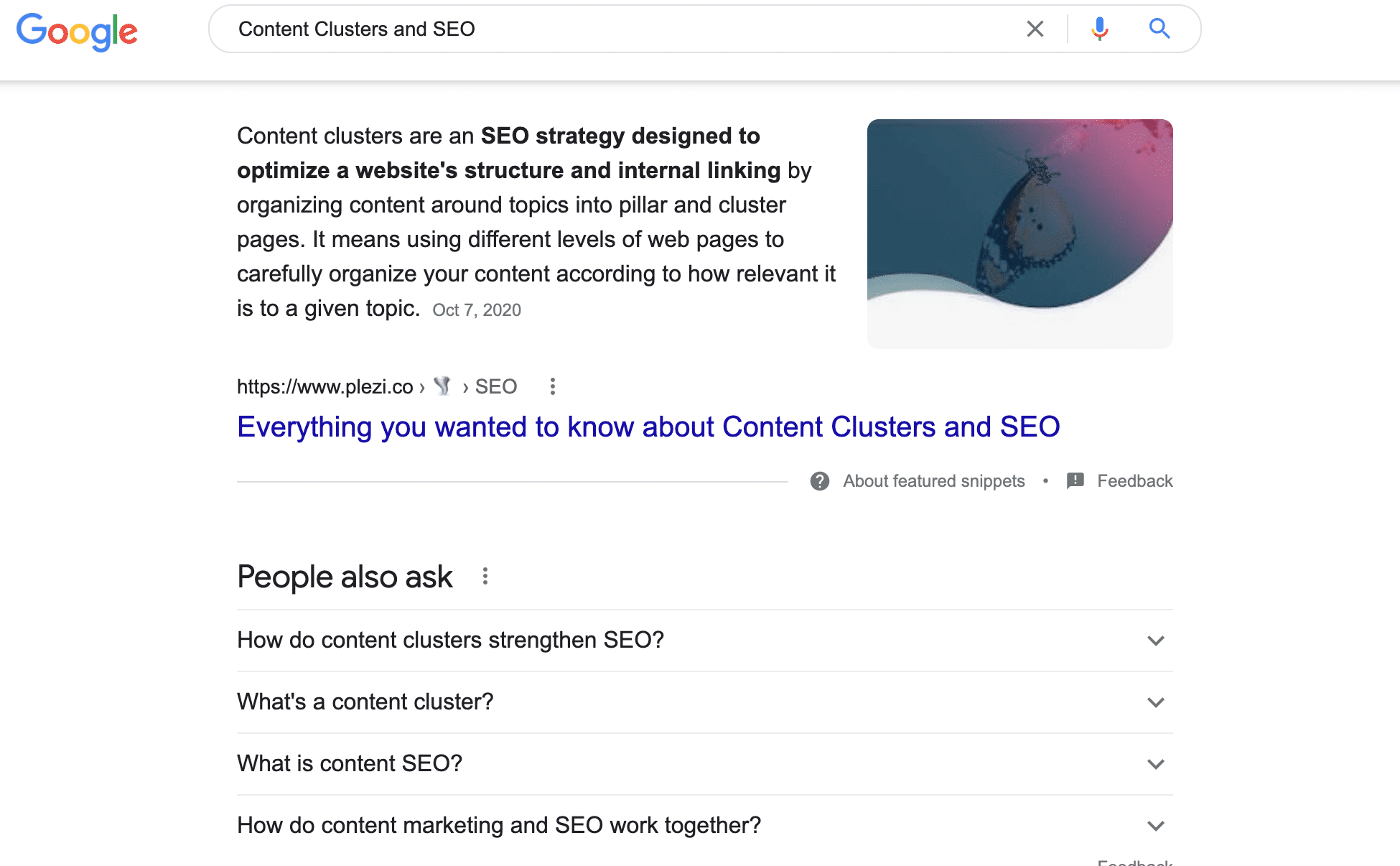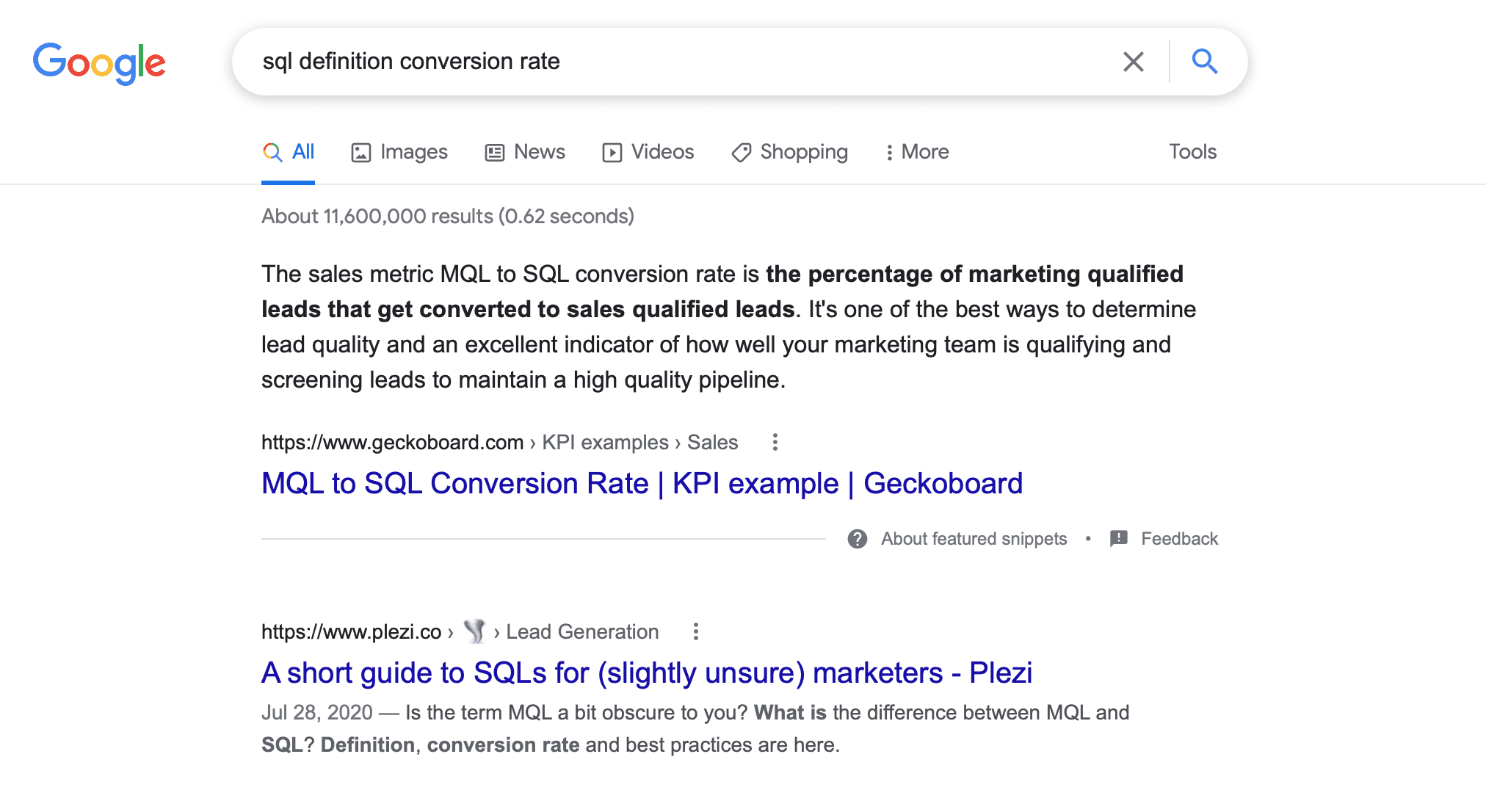If your blog posts are going to be found by prospects online, they need to be optimized for SEO. When a prospect looks at their news feed on LinkedIn, for example, the title of a piece of content is probably what will make them decide to click on it, or not. That’s why it’s worth spending some time thinking about the titles of your blog posts to get them right.
There’s now an almost overwhelming amount of content available online, so titles really need to stand out from the crowd to be noticed. They need to grab the attention of prospects and make them want to click on your posts rather than those of your competitors.
If you don’t get the title right, your posts will also be much less visible to prospects online. And you’ll lose an opportunity to generate traffic to your website and convert visitors, even if your content could be of real value to them. In other words, if your titles don’t encourage visitors to read the posts themselves, all your content creation efforts will have been in vain.
So, what’s the secret to writing attention-grabbing B2B blog post titles that make prospects want to click on them? We’ll tell you everything we know in the article below.
Contents:
- 5 tips for writing B2B blog post titles that will get you clicks
- 5 examples of attention-grabbing blog post titles
1. 5 tips for writing B2B blog titles that will get you clicks
1.1 Describe the content and deliver on the title’s promise
When a prospect reads the title of your blog post, they should be able to get an idea of what it’s about. You then need to ensure that content provides value to your target audience and delivers on the promise you make in the title. There’s nothing wrong with making a promise to readers if you’re sure to keep it!
But you should also avoid writing titles that misrepresent your content. If your titles promise too much, you risk creating false expectations and betraying the trust of prospects. Even though this might be unintentional, it can leave prospects feeling frustrated.
The title of a blog post is a promise, and like any promise, it must be kept.
Examples of blog post titles that include a promise:
- 10 tips for writing an SEO-friendly blog post
- Marketing automation: a practical guide to workflows and how to get started
- Everything you wanted to know about Content Clusters and SEO
1.2 Keep titles short
For the benefit of your visitors
Title length is another factor that helps people decide if they want to read your content. They’re busy, and the title that you are blogging only has a few seconds to grab their attention. That means titles should certainly be no longer than one line, otherwise, prospects will lose interest or have trouble understanding what a post is about.
But you should also try to avoid writing titles that are too short. You still need to provide your target audience with sufficient information about the content of your post.
It’s a good idea to use short, simple words in your title and to avoid technical jargon or puns. Blog post titles need to be quickly understood by prospects and should not be too long.
For SEO
If you want to increase the visibility of your content on search engines, you also need to think about SEO when writing blog posts titles. If you don’t take Google’s ranking criteria into account, your blog posts won’t rank high enough in search results to be found by prospects. If your content isn’t visible to your target audience, they won’t be able to decide if your content is of value or not. And that will mean your content creation process will have largely been a waste of time.
The ideal length for a blog post title depends on the specific goals you set for your content:
- If your post is designed to appear on the first page of search results, the title shouldn’t be longer than 60 characters. That will enable the complete title to appear in the search engine results page.
- If you want to maximize the reach of a post on social media, the title should be 8 to 12 words for Twitter and up to 15 words for Facebook.
Example of a short title that works: “How to create a marketing budget”
This is a very simple title, and it meets a direct need of our target audience.
1.3 Engage Prospects
When you create a brief for blog content, you should ask yourself the following questions:
- What is a prospect looking for when they perform a search on Google?
- What problem are they trying to solve?
- What is their goal?
Your blog post needs to be written with all these questions in mind. And the title of your blog post needs to indicate what a prospect has to gain by reading it, it must “sell” your content. This will enable you to engage prospects and generate traffic to your website.
Let’s look at the title of our article on marketing reporting. We know that the main problem our prospects have with this process is how complicated it can seem, which makes it somewhat intimidating. That’s why we chose the title “Marketing reporting: the complete guide for B2B marketers (plus a free template)”:
- “Marketing reporting”: we start with the main keyword which allows us to kill two birds with one stone. Firstly, this helps us optimize the post for SEO. Secondly, prospects can quickly see that the post deals with a topic that interests them, and this encourages them to read more;
- “Complete guide”: this reassures prospects that they will be guided right through the process, step by step;
- “For B2B marketers”: indicates to prospects that we are addressing their specific pain point;
- “A free template”: prospects understand that we will help them achieve their goal (i.e., creating a marketing report).
1.4 Use the main keyword of your blog post in the title
How successful a blog post is will be greatly affected by whether you use relevant keywords in the title. If you don’t use at least one of these, you can probably say goodbye to any website traffic that a post might otherwise generate, and your content won’t be of much use to anyone. Remember that when you write a blog post, you want to rank for a particular search engine query or keyword.
How do you choose which keyword or keywords to use? By looking at the search volume of the keywords you are targeting. This will help you to ensure that your content is of value to your ` After optimizing your post for SEO, you need to include at least your main keyword in the title of the post. This keyword will be even more effective if you can put it at the beginning of the title.
But be careful also not to overuse keywords unnecessarily. Search engines don’t like this, and it can have an adverse effect on how your content ranks in search results. It can also make your title appear spammy and create confusion. And that’s definitely not what you want to be communicating to prospects.
1.5 Use the right emotive language
When your prospects conduct a search online, they enter keywords for a topic they are interested in. Often, they are looking for the solution to a problem they are faced with. This will give them a list of search results on Google. But how will they decide which one to click on? This is yet another reason why the title of your post is so important and needs to be written so that it stands out from other search results.
It’s not only possible to use emotive language in B2B, it’s crucial.
The title of a blog post is effectively a call to action whose message is basically “click here”. So, an attention-grabbing title should share many of the same attributes as an effective CTA, and we can use the same emotive language to prompt action:
- Curiosity: this is an important factor when people are seeking to improve their understanding of a particular topic. Blog posts are often educational content. Many visitors to your website will use this content to further their knowledge. Piquing the curiosity of prospects can also result in some great marketing benefits. Think about email open rates, for example.
- Expected benefits: your title should give prospects an idea of how they can expect to benefit by reading your content. For example: “How to write blog post titles that will increase your click rates by 30%” “(this uses a great combination of the “how to” format + direct address + the benefit to be gained + a specific figure)
- Self-identification: we probably all hope to be seen as experts in our given field. To achieve this, we like to know how those that are experts do things in order to copy this behaviour. For example, what if you wrote a post entitled: “5 examples of attention-grabbing titles used by the best …”?
2.5 Examples of attention-grabbing blog posts titles
2.1 Titles with figures
Blog posts that are written in list form are often very popular because they are generally easy and quick to read. And that’s even more true if you indicate the number of list items in the title.
These figures provide readers with additional information and make the title more specific. It’s like saying, “Don’t panic, this will be quick, there are only 5 (or 10) points to cover.” That explains why posts with titles that include figures often work very well. And that’s why we often use these kinds of titles for our blog posts at Plezi.
Some examples of titles that use figures:
- 8 B2B lead nurturing tactics that will increase sales
- 10 effective ways to promote B2B marketing content
- 20 marketing tips for small businesses in 2021
2.2 Titles in the “How to” format
One of the goals of any B2B blog is to help your prospects find solutions to problems they face. Titles written in the “How to” format indicate clearly to prospects that you are about to provide a solution to their problem. You also show that you understand their needs and that you have experience dealing with their pain point. They can be assured of finding an answer by reading your blog post.
This is also an effective way to improve your organic SEO ranking in search engines. Internet users increasingly frame their search queries as questions. A title written in the “How to” format is a great way to improve your SEO ranking.
Some examples:
- How to choose the best content for each stage of the marketing funnel
- How to find and use long tail keywords
- How to evaluate marketing automation software
2.3 Titles that speak to your target market
When you write a blog post title, you should think about who your target audience is and not be afraid to speak directly to them. This makes readers feel involved and engaged. And that makes them more likely to click on the title and read the post.
Some examples:
- B2B marketers, stop trying to predict the unpredictable
- B2B sales: you’re going to love inbound marketing
- SaaS Companies: inbound marketing is made for you
2.4 Titles that involve a testimonial
You want to persuade prospects to click on a title. Another way that you can do this is to use the power of authority.
When you quote someone who has some authority in a specific area, it lends weight and credibility to what you are trying to say. If you produce content that involves a recognized expert in your prospect’s sector, prospects might be persuaded to click on it and read what that expert has to say. And this will increase traffic to your website.
We all like to hear about other people’s experience and lessons learned, and this adds value to your content. So don’t be afraid to highlight this in the title.
Some examples:
- How Lemonway tripled their lead generation in less than 6 months with Plezi
- 6 marketing strategies you should do to really stand out, by Louis Grenier
2.5 Titles that use emotive language
Some words carry more weight than others, and it can be a good idea to use these in titles to convey different emotions. For example, urgency, trust, a sense of exclusiveness, or envy.
This emotive language can turn an otherwise dull title into one that your target audience can’t help but click on. This can have a similar effect to using figures in a title, but it also helps trigger an emotional response in prospects.
Some examples:
- 8 essential content marketing formats
- Build strong business relationships with inbound marketing
- Vanity metrics: why (and how) to avoid them at all costs!
You now have everything you need to write attention-grabbing titles that will make prospects want to click on them and read your content.
How much time do you spend on writing titles when creating content for your blog? Do you have any other tips for writing titles that increase website traffic? Why not tell us about them in the comments section below? 🙂






